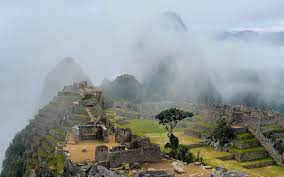Have you ever pondered the intricate web of civilizations that flourished across ancient America? I’ve delved deep into the captivating history of ancient American civilizations. European civilizations ‘discovered’ North and South America in the late 15th century A.D.
It’s riveting to know that people from Asia had already arrived over 15,000 years earlier. By the 15th century, some ancient American civilizations had faded into history. Others continued to thrive vibrantly.
As we step back in time, we’ll encounter the remarkable achievements, spiritual connections, and astonishing architectural feats that defined these cultures.
But why embark on this voyage into the past? What can we glean from these ancient chapters of history? As we traverse through the pages of this blog post, you’ll gain not just knowledge but a deep appreciation for the ingenuity that shaped societies in the Americas. Join me in unearthing the secrets of ancient America’s civilizations and uncovering the treasures that still resonate with us today.
12 top ancient American civilizations
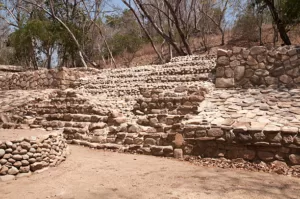
- Olmec Civilization: Pioneers of Mesoamerica
- Maya Civilization: Masters of Science and Architecture
- Inca Empire: Builders Among the Clouds
- Aztec Empire: Sun, Sacrifice, and Tenochtitlan
- Ancestral Puebloans: Life in the Cliffside
- Moche Civilization: Artistry of the Peruvian Desert
- Teotihuacan: City of Pyramids and Gods
- Chavín Civilization: Andean Spiritual Center
- Cahokia Mounds: Ancient Urban Center of North America
- The Zapotec Civilization
- The Caral-Supe Civilization
- The Tiwanaku Empire
Olmec Civilization: Pioneers of Mesoamerica

In the realm of ancient American civilizations, the Olmec civilization emerges as a remarkable trailblazer. Their legacy, etched into the heart of Mesoamerica, is a testament to human innovation. As we embark on this journey, let’s illuminate the path they paved for the intricate tapestry of cultures that would follow. It was flourishing in the lowlands of what is now Mexico from approximately 1400 to 400 BC
At the heart of the Olmec’s artistic mastery lie their iconic stone heads. Carved with astonishing precision, these colossal sculptures not only showcase their technical prowess but also symbolize their veneration of leadership. These stone monoliths connect us across time, allowing us to peer into the minds of those who shaped the ancient American landscape.
The Olmec’s influence radiated far beyond their era, leaving an indelible mark on the unfolding story of the Americas. Their agricultural innovations, complex social structures, and architectural ingenuity set the stage for the rise of later civilizations across North, Central, and South America. As we trace their footsteps through time, we uncover how their contributions laid the foundation for the grand tapestry of cultures that flourished across ancient America.
As we journey deeper into the past, the Olmec civilization emerges as a beacon of innovation. It guide us through the labyrinth of ancient American civilizations.
Maya Civilization: Masters of Science and Architecture
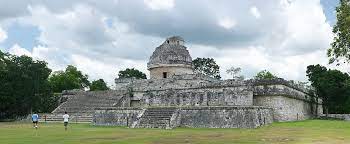
The Maya civilization is a beacon of brilliance in the tapestry of ancient American cultures. Thriving in the lush landscapes of Mesoamerica from the 3rd to the 9th century AD, the Maya left an intellectual and artistic legacy that continues to captivate.
The Maya’s thirst for knowledge led them to unravel the celestial secrets with unparalleled precision. Their advanced calendar system, a true testament to their intellectual prowess. It allowed them to synchronize various celestial cycles. As we delve into their astronomical knowledge, we’re transported to a time where the sky was both a canvas and a source of profound wisdom.
The landscape of the Maya civilization is adorned with architectural marvels. It stand as a testament to their ingenuity. The ancient cities of Tikal and Copán rise from the earth, their towering pyramids and palaces testaments to the Maya’s architectural mastery. These awe-inspiring structures are as celestial observatories, aligning with celestial events that held spiritual significance.
Inca Empire: Builders Among the Clouds

The Inca Empire is a remarkable chapter in the annals of ancient American civilizations. It stands as a testament to human ingenuity and perseverance. Flourishing in the Andes mountains of South America from the 15th to the 16th century, the Inca left an indelible mark on the lofty peaks and valleys they called home.
The majestic city of Machu Picchu, perched atop a mountain ridge, encapsulates their mastery of construction and engineering. The intricate stonework, seamless without the use of mortar, serves as a testament to their meticulous craftsmanship.
The Inca civilization wasn’t just about architectural splendor, it was also a society organized to thrive amidst the challenges of their environment. Their complex social structure, layered with duties and responsibilities, created a cohesive tapestry that sustained their empire. As we delve into their societal intricacies, we gain a glimpse of a society that operated as a finely tuned mechanism, intertwining nature, governance, and culture.
Aztec Empire: Sun, Sacrifice, and Tenochtitlan

The Aztec civilization is a formidable force in ancient America. It emerges as a captivating tale of culture and power. Flourishing in the heart of Mesoamerica from the 14th to the 16th century, the Aztecs left an indelible mark on the Americas.
Central to the Aztec society was the intricate tapestry of their beliefs. The practice of human sacrifice, while shocking to modern sensibilities, held immense significance for their cosmology. Revering the sun god, Huitzilopochtli, the Aztecs believed that these offerings sustained the sun’s journey across the sky and ensured the continuation of life.
At the heart of the Aztec Empire lay Tenochtitlan, an awe-inspiring city built on an island in the midst of a lake. Its grandeur rivalled any city of its time, boasting magnificent pyramids, intricate causeways, and vibrant markets. The city’s breathtaking beauty was a testament to the ingenuity and architectural prowess of the Aztec civilization.
Teotihuacan: City of Pyramids and Gods
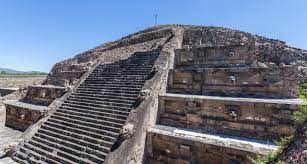
Teotihuacan, a name whispered through the winds of time, beckons us to unravel its mysteries. Flourishing in the central highlands of Mexico from around 100 BC to 550 AD, it boasts monumental pyramids that pierce the sky. The Pyramid of the Sun and the Pyramid of the Moon stand as silent sentinels, hinting at the grandeur of a civilization that once thrived.
The enigmatic murals and artifacts offer glimpses into their beliefs, rituals, and reverence for gods like Quetzalcoatl and Tlaloc. The city’s purposeful alignment with celestial events ignites speculation about its cosmic connections.
The echoes of Teotihuacan’s glory eventually faded, leaving behind unanswered questions. The factors behind its decline, whether due to environmental stress, social upheaval, or external forces, remain debated among scholars. The city’s eventual abandonment left it a silent testament to the ebb and flow of civilizations.
Moche Civilization: Artistry of the Peruvian Desert

The Moche civilization, though less heralded than some, casts a captivating glow on the historical landscape of ancient America. It was flourishing along the arid coasts of Peru from the 1st to the 8th century AD.
At the heart of the Moche civilization lies an artistic mastery that reverberates through time. Their intricate pottery, deities, and rituals, provide a window into their beliefs and practices. Equally dazzling is their metalwork, where intricate gold and silver pieces showcase their skilful craftsmanship. As we traverse the landscape of the Moche civilization, mysteries abound. Their society was marked by remarkable social differentiation. The ceremonial centres, like the Huaca del Sol and Huaca de la Luna, still whisper secrets of their spiritual practices and societal structure.
Ancestral Puebloans: Life in the Cliffside
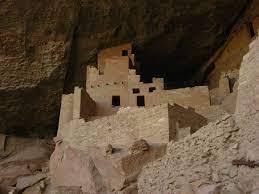
The Ancestral Puebloans were an intriguing ancient American civilization. It beckons us to uncover the secrets of their lives amidst the rugged landscapes of the Southwest. Flourishing from approximately 1 AD to 1300 AD, they etched their mark on the canyons and cliffs, creating awe-inspiring dwellings that still stand today.
The cliff dwellings of the Ancestral Puebloans were more than shelter. They were feats of architectural ingenuity. From the structures of Mesa Verde to the multi-storied dwellings of Bandelier, their construction showcased advanced engineering skills. Their agricultural prowess was equally impressive. They cultivated maize, beans, and squash in the challenging desert environment.
Central to the Ancestral Puebloans’ way of life was their harmonious coexistence with nature. They skillfully adapted to their surroundings, utilizing natural resources without depleting them. Their reverence for the land and its rhythms is evident in their intricate pottery and rock art. It often depicts the interconnectedness of humanity and the environment.
Chavín Civilization: Andean Spiritual Center
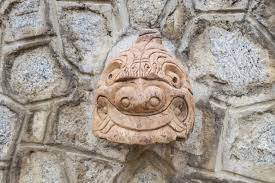
The Chavín Civilization, flourishing from around 900 to 200 BC, stands as a captivating chapter. It was nestled within the Andean highlands of present-day Peru.
The Chavín culture’s influence radiated across the region. It defies the notion that ancient civilizations in South America were anything short of sophisticated. Their ceremonial centres, adorned with sculptures, exemplify their artistic and architectural prowess.
The legacy of the Chavín Civilization enriches our understanding of the broader tapestry of ancient civilizations in South America. Their contributions, alongside those of other cultures like the Moche and Nazca, shaped the diverse mosaic of societies.
Cahokia Mounds: Ancient Urban Center of North America

Cahokia Mounds was located near present-day St. Louis, Missouri. It is a captivating testament to ancient American civilizations. These mounds are remnants of the Cahokia civilization, which thrived from around 600 to 1400 AD.
As one of the significant ancient American civilizations, the Cahokia culture left behind a complex society. The mounds themselves, constructed over generations, reflect their advanced architectural and engineering skills. Cahokia Mounds challenge the perception that ancient North American civilizations were less developed. In fact, they stand as a testament to the achievements of early American civilizations, with a complex social structure.
The legacy of Cahokia Mounds contributes to our understanding of ancient civilizations in North America. These monumental earthworks provide a glimpse into the lives of the people who inhabited this region centuries ago.
The Zapotec Civilization: A Tapestry of Innovation
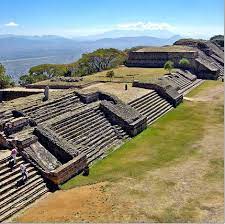
The Zapotec Civilization was spanning from 500 BC to 750 AD. It holds a significant place among the ancient American civilizations. It was flourishing in the region that is now known as Oaxaca in Mexico.
As one of the early American civilizations, the Zapotec culture emerged as a beacon of sophistication and ingenuity. Their achievements challenged the notion that ancient North American civilizations were less advanced. They left behind a legacy that is woven into the fabric of ancient civilizations in North America.
The Zapotec Civilization’s cultural and architectural prowess rival those of even the most well-known South American ancient civilizations. In the tapestry of American civilizations, the Zapotec’s mark is indelible, contributing to the intricate mosaic of civilizations in the Americas.
The Caral-Supe Civilization: Ancient Origins

The Caral-Supe Civilization was flourishing from 3000 to 2500 BC. It stands as a remarkable testament to ancient American civilizations. Nestled in the heart of ancient America, specifically within the region we now identify as Peru. the Caral-Supe Civilization remains one of the oldest societies to have ever emerged in the Americas.
Among the ancient American civilizations, the Caral-Supe Civilization holds a special place, known for its advanced architectural marvels and intricate societal structures. As one of the oldest civilizations in South America, it predates even the renowned empires that would later rise across the continent.
The Caral-Supe Civilization was situated within the central expanse of South America. It played a vital role in shaping the course of early American civilizations. Its existence challenges the notion that ancient North American civilizations were less developed than their Southern counterparts. The Caral-Supe Civilization’s accomplishments prove the ingenuity of the people who thrived within its borders.
The Tiwanaku Empire: Legacy of the Andes

The Tiwanaku Empire, spanning from 550 to 950 AD, stands as a monumental testament to ancient American civilizations. This Empire flourished as a beacon of cultural and architectural prowess.
As one of the ancient American civilizations, the Tiwanaku Empire’s grandeur extended across the landscapes of South America. It showcases their mastery of monumental construction and intricate societal organization. Situated in the midst of South America, this Empire defied the notion that ancient civilizations in Central America were any less advanced.
In the panorama of American civilizations, the Tiwanaku Empire’s influence remains as awe-inspiring as the grand pyramids of the Caral-Supe Civilization. The legacy of the Tiwanaku Empire intertwines with the threads of history. It contributes to our understanding of the enduring legacy of the ancient American civilizations like the Olmec, Wari, and Caral-Supe civilizations.

